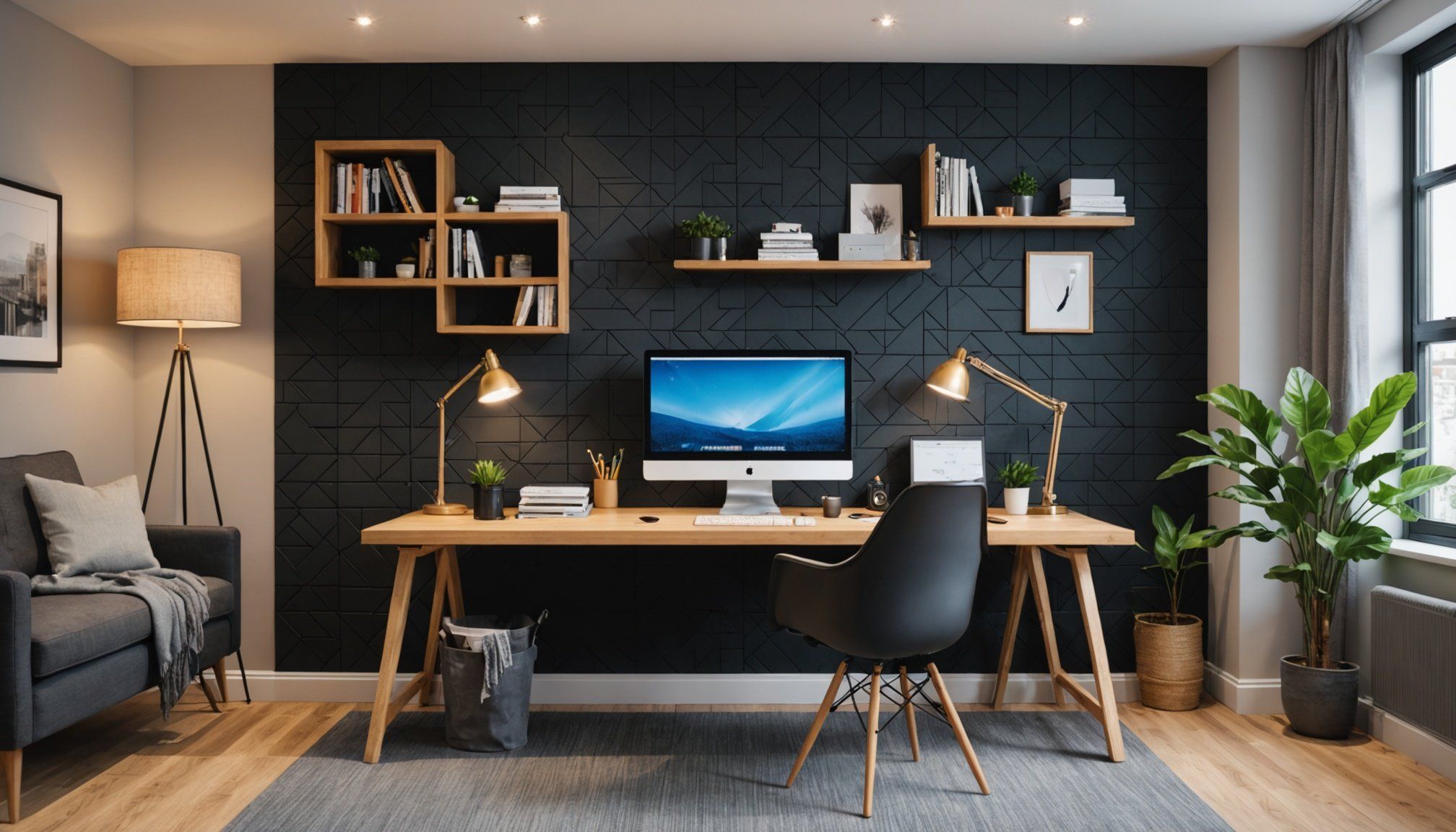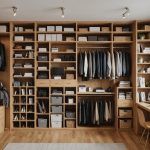Overview of Soundproofing Benefits
Creating a quiet workspace offers numerous advantages, impacting both personal and professional realms. Enhanced focus and productivity are prime benefits of effective soundproofing. By minimising distractions from external and internal noises, individuals can concentrate better on their tasks, leading to increased efficiency and output.
Furthermore, soundproofing significantly contributes to improved wellbeing and mental health. A quiet environment reduces stress levels, promoting a sense of calm and relaxation. It provides a sanctuary from the daily noise, allowing for better mental clarity and emotional stability. This peaceful atmosphere can enhance overall quality of life, ensuring you feel invigorated and refreshed in your workspace.
Additional reading : Revitalize your uk cottage: the ultimate guide to greywater recycling for thriving garden irrigation
Another noteworthy benefit is the potential increase in property value. Homes equipped with well-implemented soundproofing techniques often stand out in the market. Potential buyers are more inclined to invest in properties that promise a serene living space amidst urban hustle and bustle. An investment in soundproofing not only pays off immediately with a tranquil environment but also offers long-term financial gains.
Understanding Noise Sources in Home Offices
Understanding the common noise sources in home offices is essential for addressing acoustical challenges effectively. Home office acoustics can be significantly affected by both internal and external noises, each contributing to distractions in different ways.
Topic to read : Your ultimate guide to selecting the ideal contractor for historic restoration projects in the uk: key tips and insights
Internal noises, such as conversations and office equipment, are often unavoidable yet manageable. These sounds typically result from daily activities within the space and can vary greatly depending on the number of people and devices in use.
External noises, including traffic, construction, and noisy neighbors, are outside the user’s control but have a profound impact on productivity. These noises might fluctuate depending on the time of day or changes in the surrounding environment.
It is important to differentiate between airborne and impact noise. Airborne noise refers to sounds transmitted through the air, like voices or music, while impact noise is created by physical contact, such as footsteps or door slamming. Identifying these types of noise is crucial for implementing soundproofing measures that address each source effectively and ensure a quieter workspace.
Overall, recognising the origin of noise in a home office setting helps tailor soundproofing solutions, enhancing the workspace advantages by improving concentration and efficiency.
Innovative Soundproofing Techniques
Incorporating innovative soundproofing techniques can significantly enhance your environment, creating a true quiet workspace. Understanding these methods helps in selecting the most effective solutions for your needs.
Acoustic Panels
Acoustic panels are essential for absorbing sound waves, thereby reducing echo and reverberation. Their absorption capabilities make them a popular choice in environments where spoken communication and clarity are vital. They come in various sizes and designs, offering both functional benefits and aesthetic appeal when integrated into room decor.
Soundproofing Curtains
Soundproofing curtains provide a blend of practicality and style. These heavy-duty drapes can significantly block external noises like traffic and construction. They are easier to install compared to other methods, simply requiring curtain rods. Additionally, they add an element of visual warmth to a space.
Foam Insulation
Foam insulation is lauded for its effectiveness in sound absorption and thermal insulation. It’s particularly useful in spaces prone to impact noise, like footsteps. Installation considerations include wall cavity measurements and ensuring proper adhesive application. Once in place, foam insulation works silently to maintain a tranquil home office ambiance.
Each of these techniques serves a distinct purpose, catering to various home office acoustics needs while balancing practicality and aesthetics. By combining these methods, you can achieve an optimal soundproof environment.
Materials for Effective Soundproofing
Finding the right soundproof materials is essential for optimising your home or workspace. Insulation options vary widely, each offering distinct advantages in terms of effectiveness and practicality.
Mass Loaded Vinyl
This heavyweight champion of soundproofing excels in blocking sound transmission. Known for its high density, Mass Loaded Vinyl (MLV) greatly reduces noise by adding mass to walls, floors, and ceilings without taking up much space. Its flexibility allows for easy installation in tight spots.
Acoustic Caulk
Acoustic caulk serves as an excellent sound sealant, particularly for sealing gaps and cracks where sound might leak. It’s crucial in maintaining a seamless sound barrier, especially in areas where standard insulation might falter. Unlike regular caulk, it remains flexible, which is vital for long-term effectiveness.
Soundproof Drywall
Designed to double up as both a wall and a sound barrier, soundproof drywall is thicker and denser compared to standard drywall. Its ability to absorb sound makes it perfect for environments requiring minimal noise interference.
These materials not only offer varying levels of sound reduction but also take into account environmental considerations and sustainability, as many options are recyclable and made from eco-friendly substances.
Step-by-Step Installation Tips
Soundproofing installation can be straightforward with proper planning and preparation. Start by assessing your space thoroughly. Planning and measuring your space accurately ensures you have enough materials and avoid unnecessary expenses. Measure walls, ceilings, and floors meticulously.
Gathering the necessary tools is essential before beginning any project. You’ll likely need items such as:
- Tape measure
- Utility knife
- Hammer and nails
- Adhesive materials
Equipping yourself with the right tools and materials anticipates challenges and streamlines the process, especially for DIY soundproofing endeavors.
Common pitfalls in soundproofing often arise from incorrect installation methods. One prevalent mistake is not sealing gaps thoroughly. This oversight can render even the best materials ineffective. Take care to address all potential leakage points, including windows, doors, and vents, using materials like acoustic caulk.
Another error is insufficient overlap in soundproofing materials, which may lead to compromised sound barriers. Ensure overlaps are enough to prevent sound seepage.
Understanding the intricacies of installation helps maximize the benefits of soundproofing, enriching the overall quality of your space whilst enhancing tranquillity.
Cost Estimates for Soundproofing Projects
Soundproofing costs can vary, making budgeting for soundproofing a critical step in any project. Understanding the average costs of materials and labour in the UK is fundamental. Materials like Mass Loaded Vinyl and soundproof drywall typically range from £30 to £90 per square metre, depending on quality and thickness. Labour costs can add an additional £150 to £300 per day, contingent on project complexity.
To create an effective budget, prioritising projects based on noise impact and available funds is essential. Start by addressing rooms with the highest noise levels or those frequently used for work or relaxation. Evaluating which soundproofing techniques offer the most quiet workspace advantages can guide these decisions.
Soundproofing offers potential savings by reducing noise disturbance, leading to enhanced productivity and wellbeing. For example, fewer distractions may decrease the likelihood of errors and enhance focus, translating into long-term efficiencies both personally and professionally. Calculating these benefits alongside upfront costs can provide a comprehensive overview of the project’s overall value. Always research current prices and consult with experts to ensure accurate estimates, adapting the budget as market conditions change.
Case Studies and Testimonials
Gaining insights into soundproofing success stories can highlight real-life transformation opportunities. Many individuals report markedly improved productivity and overall satisfaction after implementing various soundproofing techniques.
One impactful example involves a freelance graphic designer who struggled with constant noise from traffic. By installing acoustic panels and soundproofing curtains, they notably reduced external disturbances. This change fostered a more quiet workspace, enhancing their creative output and reducing mental fatigue.
Another testimonial features a family residing in a bustling urban area. They applied Mass Loaded Vinyl and soundproof drywall to their home office. This dual approach drastically decreased the intrusion of construction noises, enabling serene virtual meetings and study sessions.
Experts agree on the effectiveness of tailored solutions. An acoustical consultant emphasizes evaluating each space individually, suggesting that mixing methods like foam insulation with acoustic caulk targets differing noise origins. This flexibility ensures maximal effectiveness and practicality.
These authentic accounts underscore the importance of strategic implementation. Tailoring soundproofing based on specific needs translates to significant advantages, furthering the soundproofing benefits for myriad users.
Additional Resources and Expert Recommendations
Navigating the world of soundproofing resources requires access to expert advice and reliable guidelines. This section provides you with essential standards, recommended products, and professional services.
Industry Standards and Guidelines
Expert soundproofing resources often align with industry standards for addressing noise control effectively. Compliance with these guidelines ensures the safe and efficient application of soundproofing techniques, helping you achieve desired results while adhering to safety regulations. Resources from certified institutions can help you understand these standards better.
Recommended Brands and Products
Selecting the right brands and products is crucial for effective soundproofing. Esteemed products, such as Mass Loaded Vinyl and acoustic caulk, consistently receive top reviews for their performance. Look for brands with a proven track record verified by user testimonials and industry feedback to guarantee the best outcomes.
Where to Find Professional Help
For intricate soundproofing installation, hiring qualified professionals ensures the task is completed efficiently and aligns with personal requirements. Online directories and trade associations provide access to vetted experts, offering peace of mind with their installation prowess. Consider their expertise when undertaking complex projects to secure the benefits you anticipate.











